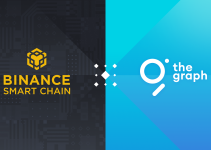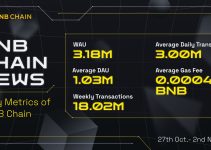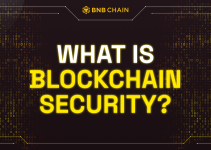
This article was written by: Sho (BNB Chain Tokenomics Team) and Ariel (Tokenomics DAO Contributor).
BNB Chain and TokenomicsDAO partnered on joint research to create a framework to analyze play-to-earn (P2E) economies. Our goal was to understand how token incentives could be used effectively to maintain a healthy economy.
We realized that’s a moving target, and came up with a few assumptions on how to design token incentives during different product development phases. In this article, we analyze the use of token incentives to bootstrap a game economy.
Product Design and Tokenomics
Let us assume that the existence of tokens is to make the product sustainable. For early-stage products, the goal is for user-driven content and liquidity to accumulate in the product and increase convenience. For late-stage products, the goal is for the product to leave the hands of the team and be governed by the community like a publicly traded company.
Network effects are a critical concept in product design and token economics for the following reasons:
- Products should be designed to accumulate value through network effects.
- Token incentives should promote the network effect or be used to overcome anti-network effects, which cause users to churn and hinder network growth.
- The value a product provides can change over its life cycle.
A measure that induces users to take a specific action by granting tokens falls under 2 above, but 1 must be satisfied to implement 2 effectively. Yet, depending on the product design, tokens will not work well. This is because restrictions exist on what tokens can promote. Effective tokenomics follows good product design.
Regarding 3 above, as the number of users increases due to the network effect, the product’s utility also changes. For example, in games, when the number of users is 10k, the value is attached to the gameplay itself; when 100k, the value is attached to the communication through the game; and when 1 million, the value is attached to the self-branding in the game.
NFTs, which are “just JPEGs,” are traded at high prices because people recognize the records on the public blockchain and share the images tied to them. Value is not created because there is a community – the community is built because of the set of people who find that value in common.
This is precisely the network effect: a JPEG becomes more valuable as the number of people recognizing it increases. But let us note that our attention is also a finite resource.
Token use
Current Problems
Many projects have structures that do not satisfy 1 (product design) and 2 (token incentive) in the previous section. For example, the product’s value is not based on account interactions, and token incentives do not facilitate the interaction.
A typical example would be a staking system whereby locking in 100 tokens would earn you 105 tokens a month later or tokens earned just for playing the game.
Why Public Blockchains?
Public blockchains are, in many respects, highly inefficient systems. However, being public, namely permissionless and verifiable, it is open to innovations from anybody and has a population large enough to create a network effect.
Before designing token economics, we must find an appropriate product structure that can take advantage of the network effects that continue to be encouraged by the public environment.
Token Incentive Framework
The table above shows examples of tokens with different uses and sources of value in different phases. However, some products may grow while having a single use and value.
Expansion Process Network Effects
For example, the utility of the telephone does not change from phase to phase. An increase in telephone subscribers increases the number of people you can contact via the telephone. The same applies to a simple AMM, where the utility is liquidity or small slippage regardless of the phase.
* As in the case of AMM, liquidity does not increase indefinitely due to positive feedback. This is because the slippage of a Uniswap v2 type AMM is determined by 2 * (trade size/pool size). To provide the same utility, the pool size only needs to increase indefinitely if the trade size increases indefinitely. In other words, the upper limit is formed by the nature of the product and the external environment.
On the other hand, the utility that participants derive from the ecosystem around games and social networking services increases as it grows. For example, in the case of games, people may log into games in the early phases because the games are fun, in the mid phases to communicate with online friends, and in the late phases to develop an identity in the virtual society.
See NfX’s excellent article on the various types of network effects.
Gods Unchained – Using Tokens to build a Web3 Moat
Immutable’s Gods Unchained is a good example of a web3 game using tokens to drive user growth (acquisition + retention) in the early development phase. The trading card game combines free-to-play and play-to-earn (P2E) components.
It was originally launched in 2018 without any web3 capabilities. In 2020, they debuted their P2E model without a native token, featuring an NFT card marketplace and “The Forge,” where players were able to mint their cards into NFTs to sell in the marketplace.
In The Forge’s initial implementation, players could use Flux – a virtual currency that you earn from playing the game – to mint cards into NFTs by adding at least two cards and paying the Flux fee. There were two major problems with Flux for a P2E economy:
- Its inflow compounds, so higher-ranked players would have a disproportionate influence over the market
- It’s infinite, so eventually in-game assets would become worthless
A few months after the initial launch, the developers decided to close The Forge to rethink the game economy. One year later, the $GODS token was announced along with The Forge reopening.
Their announcement explains in detail the reasoning behind this decision, and one interesting aspect is their diagnosis of the threats to P2E economies:
“The pattern which we have seen afflicting other play to earn games is an economy which starts off strong, but diminishes its strength over time as the market becomes flooded with currencies (such as Flux) which can be earned infinitely.”
Our interpretation is that the team was getting ahead of potential challenges that would arise in the transition from the early to middle phase. These concerns were addressed in the $GODS tokenomics design, which provides mechanisms to grow and retain its user base.
So let’s get to it! First, a summary of the vision behind the $GODS token and how players earn tokens according to the whitepaper:
Token vision: “player-driven ownership of the token will hypercharge the community and the growth of Gods Unchained, as users become incentivized to work together to make the game successful.”
How to earn $GODS:
- Manual Staking
- In-game campaigns
- Referrals
How do these token incentives tie in with user growth? From a user acquisition perspective, the team outlines their strategy to rely on three growth loops:
- Influencers – to bring awareness, acquire new players at scale, and target different niches
- Referrals – reward existing players for bringing quality new players
- Engagement – continuously bring players back to engage with the game, increasing players’ Life-Time-Value
We’d argue that the $GODS token checks all the boxes. The Community & Ecosystem Fund (20.5% of the token supply; or 102.5M $GODS tokens) could be used to sponsor influencers with the potential to drive user growth.
Gods Unchained’s referral program rewards both the referrer and referred with 10 $GODS once the referred reaches Level 6 in the game. The program will distribute up to 1 million $GODS, which helps to generate a sense of urgency for players to refer their friends and family.
Finally, airdropping $GODS for in-game campaigns is an important engagement driver. The game relies on Weekend Ranked competitions, following the model that made FIFA’s Ultimate Team so successful. Add token incentives on top and you can have a swarm of players battling to become the champion every week (players can also earn card packages depending on their final rank).
Additionally, there’s the Daily Token Reward, which rewards players that play at least 10 matches a day according to their win rate. The $GODS rewards distributed increase along with the number of active players in the game – talk about a growth loop!
These main in-game campaigns end up strengthening the stronger players, because the higher your level and the more you win, the more you’ll earn.
Although that is offset by players only playing within their ranks – which gives new players a chance to earn rewards if they win consistently -, at the end of the day the winners take it all. So there could be an increase in churn as the game grows and becomes more competitive.
That said, there are still many more in-game campaigns the team could leverage to keep engagement high, like Quest, Seasonal reward, Tournament, and special game modes.
We could say that $GODS does a good job at user acquisition. To analyze its user retention mechanics, let’s quickly go through the token utilities:
- Crafting NFTs in The Forge – users must pay Flux + $GODS to mint cards into NFTs
- Trading cards in the marketplace
- Manual Staking – each week, players must hold $GODS in an Immutable X wallet linked to the game and complete at least one in-game activity (play, mint, purchase, or trade)
The $GODS requirement to craft NFTs in The Forge may indirectly increase retention by increasing card scarcity. That makes the NFT cards a better store of value (especially the rarer ones), rewarding players for the time dedicated to playing the game.
Trading cards in the marketplace doesn’t improve retention by itself. However, 20% of the trading fees that Immutable collects are moved to the Staking Rewards Pool, which creates another feedback loop between user growth and token rewards for active players – ultimately driving retention.
The staking mechanics ensure that players must stay active to earn rewards. That pretty much just spells retention. It also favors skin in the game rather than skill, because stakers earn based on the minimum amount of $GODS they hold each week.
The team also plans to launch community governance for active stakers. The community will have the power to vote on how the Community & Ecosystem Fund is spent. Other envisioned use cases for governance are:
- How to allocate the Gods Unchained $GODS reserve (25% of token supply),
- Changes in $GODS token supply,
- Sponsorship or grant recipient, and
- Add other governance proposal categories
Players will have a minimum $GODS staking requirement to create new proposals, ensuring skin in the game to align with the dapp’s long-term goals.
Governance may be the ultimate killer-mechanism for user retention. We hypothesize that empowering users to steer the game’s development could greatly enhance their sense of ownership, incentivizing them to not only play but also care about the ecosystem as a whole.
Gods Unchained is still in its early phase, but the way they approach tokenomics certainly makes us feel that they’re setting the stage to keep the community engaged in the middle and late product phases.
Closing Remark
Tokens work effectively as a catalyst to push a product from the initial phase to the self-sustaining growth phase. However, the network effect is distinct from the viral effect. Therefore, the product must be structured to enjoy the network effect. Also, the direction of the product and the token must be aligned to create a synergistic effect.
Gods Unchained provides a good combination between product design and token incentives, which could drive the network effect.
The product allows users to compete in various game modes, providing a level of variety and challenge that can be very appealing to both new and experienced players who enjoy card games.
The token incentives are designed to boost acquisition through referrals while increasing engagement and skin in the game by rewarding player activity, skill, and belief in the ecosystem (represented by the amount of $GODS held in their wallets).
Again, we’re excited to see how the decentralized governance implementation will play out. Hopefully, it will boost Gods Unchained’s growth and creativity even further.
Using tokens for product growth is not a panacea, and the swings to both positive and negative are large. Token incentives can increase the likelihood of failure as well but are a welcome trait for people seeking call options on products they believe in. They can also help create vibrant game economies when the product and token designs support its network effects.
BNB Chain supports game developers with a series of support programs, including the tokenomics advisory program. Feel free to contact us here.


